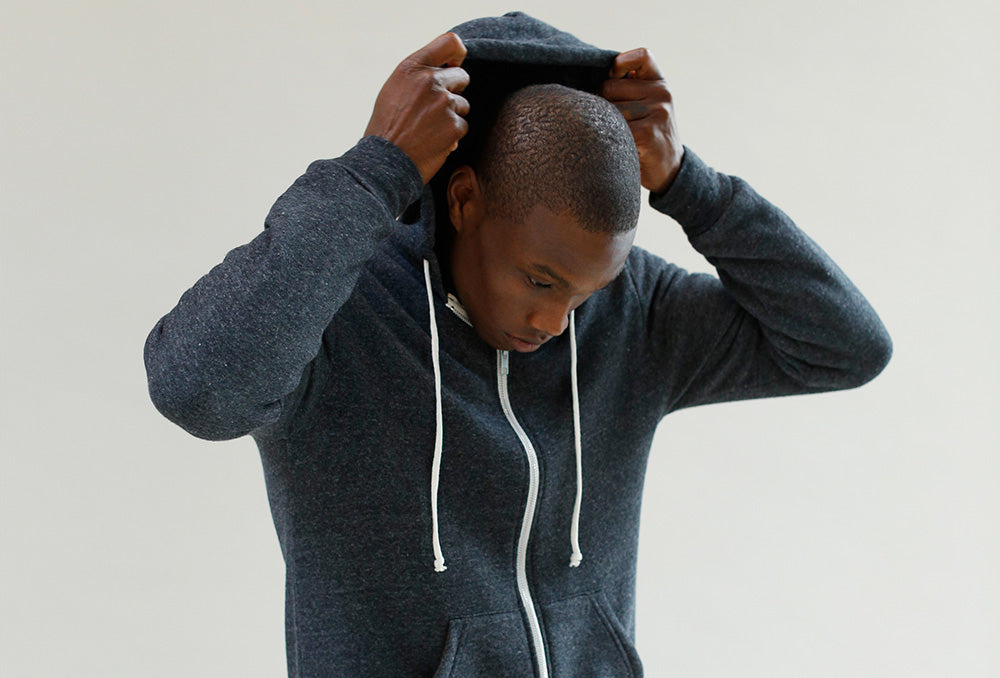The History of the Hoodie: Empowerment & Rebellion
Posted by CHANELL ROSE

Few garments have created such controversy as the hoodie . From its association with youth driven communities, iconic sports players and the runways of Paris, the hooded sweatshirt is one of our most iconic wardrobe staples.
It’s design has barley changed over the last 80 years. The blank canvas has appealed over the generations, as different walks of life adopted the hoodie as a symbol for music, innovation and rebellion.
1930s: Invention
In the 1930s American clothing manufactures began experimenting with fabrics traditionally used in undergarment mills to create what we now know as the hoodie. The apparel company now known as Champion Athletic Apparel produced a sweat shirt material to keep athletes and laborers warm and protected from the elements. The design evolved into sportswear for the mass market over the course of the 20th century.
The hoodie made a transition from practical clothing to a personal statement when athletes started to give their sports attire to their girlfriends to wear. The trend emerged throughout high schools in 50’s America, along with polo shirts & letterman jackets. This started the early adoption of using sportswear as a fashion statement.
1970s: Rebellion
In the 70s, hip-hop culture emerged in the Bronx, inspiring rap music, graffiti and break dancing. Wearing a hoodie at this time meant you were keeping a low profile, and with a design like a cobra hood it was worn to intimidate others. The hoody allowed unrestricted movement for the dance routines and concealed the identities for graffiti artists on the street.
In California, skaters rejected the mainstream culture, and with the closure of many skates parks skaters maintained their lifestyle however they could, legal or not. To feed the rebellion, music in the area gravitated towards hard core punk and hoodies became a staple of the culture.
In 1976, the release of “Rocky” added another layer of symbolism to the hoodie. The grey marl silhouette became a symbol of his hard knocks, work ethic, and reestablished the hoodie’s connection to its working class roots, reaffirming its look into today’s mainstream society.
1980s: Empowerment
In the 80’s, the hoodie became part of a look associated with street style. Its mass adoption began with the parallel popularity of hip-hop from the US, where rappers modelled themselves after athletes in a bid to emulate strength and status.
1990s: Mainstream
By the ‘90s, the hoodie’s duality as both trend and iconic staple was well established. It was during this era when the term “hoodie” became part of American vocabulary, filtered by hip hop’s rise into the mainstream and the huge rise of urban fashion.
The 90’s saw the growth of hard edged gangsta rap, and groups like Wu Tang Clan and Cypress Hill had a pared down a dress code to suit their hard rhythms. By this time the hoodie had quickly become cultural symbol.
2000: Tech Uniform
2012 was a reminder that whether positive or negative, the hoodie can always be used to make a statement. Mark Zuckerberg caused a stir wearing a hoodie to meet Wall Street investors, which was ultimately seen as a power move. Whether or not this was an intentional tactic, we conclude it convincingly established an identity for Zuckerberg as a non-conformist rather than created a casual fashion statement.
SHARE:






